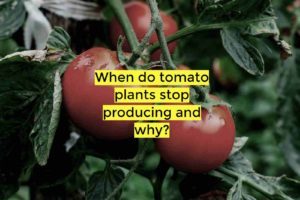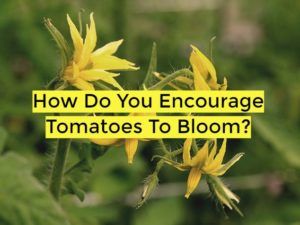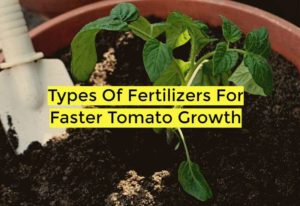It’s a new day at the garden or farm, and as you stroll around, you notice some leaves forming spots on them. Not just that, but the tomato leaves turning yellow with brown spots. Don’t panic. You may have just spotted the notorious but treatable Septoria leaf spot in tomatoes.
All around the world, farmers have encountered Septoria leaf spot in tomatoes. It is a widespread tomato disease caused by Septoria lycopersici (a fungus). The fungus can attack tomatoes and other crops in the Solanaceae family, like eggplant and potatoes.
The disease starts mild, which is the best time to intervene. However, it can quickly spread to the whole plant. You see tomato leaves turning yellow with brown spots, then dry and fall off. As a result, the plant becomes very weak and unproductive.
How to know it is Septoria leaf spot
The older leaves near the plant base are the first to get infected because they are closer to the soil where the fungi and their spore occur.
Also, the air around the plant base is moist, which favors the growth of the fungus. The infected lower leaves will begin to show spots with brown edges less than an inch in size.
In a short time, you notice the spots have increased in number on the surface of the leaf. This is one of the distinguishing factors of Septoria leaf spot from other diseases.

Left unchecked, the disease will progress, and the spots will grow in size. Eventually, some of them will merge into more prominent blotches. The spots will begin forming fruiting bodies in their centers.
It will swiftly spread upward from the lower, older leaves to the younger ones. The leaves will wilt, fall off, and turn yellow, producing a slew of other problems.
You will see pale black pimples or fruiting bodies at the center of the spots where spores are produced. They are more visible using a magnifying glass.
The fruiting bodies are another distinguishing factor of Septoria leaf spot disease.
You might also like: How to identify tomato bacterial wilt symptoms fast
It spreads through spores…
The Septoria leaf spot may also infect the stem and the flowers but never the fruits.
Septoria can also spread through spores carried in the air from infected plants.
Septoria leaf spot in tomatoes grows in moist, warm environments, ideal for growing tomatoes. When temperatures rise beyond 80 degrees Fahrenheit, spores develop quickly, taking over your plant in a few weeks.
Effects of Septoria leaf spot on the plant
If the disease is left untreated, the infected leaves will turn yellow, dry, and fall off. The leaves drying or falling off is called defoliation.
The leaves are the food factory in any plant. When defoliation occurs, your tomato cannot manufacture food and becomes weak. Weak plants are easily attacked and can succumb to other diseases and pests.
Septoria leaf spot does not attack the fruits directly, but because it attacks the leaves, the fruits are affected in the end. The lack of leaves leads to sunscalding of the fruits. When fruits get exposed to too much sun, their skin burns and appears like they have been cooked.
Also, because there is little food production in the leaves, the fruits do not grow to the desired sizes. In some severe cases, you may be lucky if you get any fruits at all.
Read more: 5 Benefits Of Tomato Pruning Beyond Disease Control
What you can do to control Septoria leaf spot
Pruning infected leaves

Controlling Septoria leaf spot after symptoms have spread is a headache and quite the challenge. By boosting airflow, you reduce humidity and increase the speed of leaves drying. You can read more about the benefits of pruning here.
Wet leaves create a conducive environment for the growth and spread of Septoria disease.
Pruning or thinning whole plants or removing selected branches from individual plants can help halt the illness. It would be best if you pruned the infected ranches as soon as you spot one or two of them.
When disposing of the infected parts, first dry them and then burn them. Please do not leave them in a compost pit because they could easily find their way back by wind or livestock on people’s shoes.
Chemical treatment
- Organic fungicides
For organic farming enthusiasts, fungicides containing copper or potassium bicarbonate are a great bet against the spread of Septoria and other diseases like blight. Begin spraying as soon as the first symptoms show, and follow the guidelines on the package for ongoing treatment.
- Synthetic fungicides
Fungicides with copper or chlorothalonil labeled for use on vegetables may also suppress Septoria leaf spot if administered carefully early in the disease’s course (before symptoms appear is optimal) and regularly for the balance of the growing season. If you opt to use fungicides for disease control, make sure to read and follow all of the fungicide’s label instructions to ensure that you’re using the product safely and effectively.
Read more: Preventive spraying saves your crops from disease after pruning and harvesting
How to prevent outbreaks in the future
- Cultural treatments can help lower the danger of foliar leaf spot outbreaks, but they require lots of planning way before you start doing anything on your farm.
- Remove as much tomato plant remains from the farm as possible at the end of the harvesting season.
- Once you remove the remains, till thoroughly break up any leftover contaminated particles, doing so will expose them to the sun and kill them, only leaving the spores which survive longer in the soil.
- Crop rotation away from tomatoes and potatoes for three to four years also aids in breaking the disease cycle. When the spores germinate and find no host, they will also die.
- Just in case any are left, you can add a 2-4″ layer of organic mulch on the farm to cover the soil surface. Mulching the soil reduces the chances of spores jumping onto the surface of the lower leaves if you cannot rotate for that long period.
- Planting density and spacing to promote air circulation and reduce humidity helps to reduce disease development.
- Reduced overhead watering (to prevent spores from splashing from leaf to leaf and from debris) is also beneficial.
Read More
How to get rid of Tuta absoluta in tomatoes
How to treat blossom end rot in tomatoes (black rot at the base of the fruit)





[…] Read More: Septoria Leaf Spot Disease […]
[…] Did you know: Tomato Leaves Turning Yellow With Brown Spots: Septoria Leaf Spot Disease […]